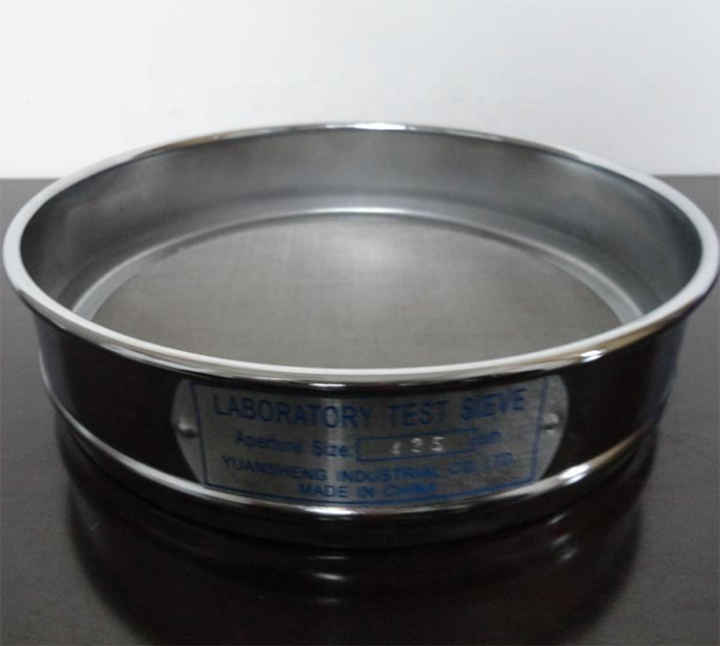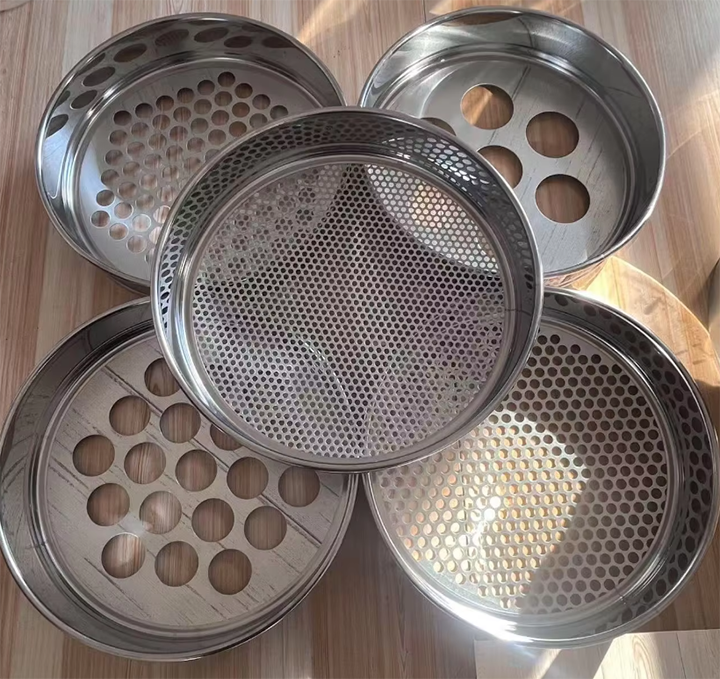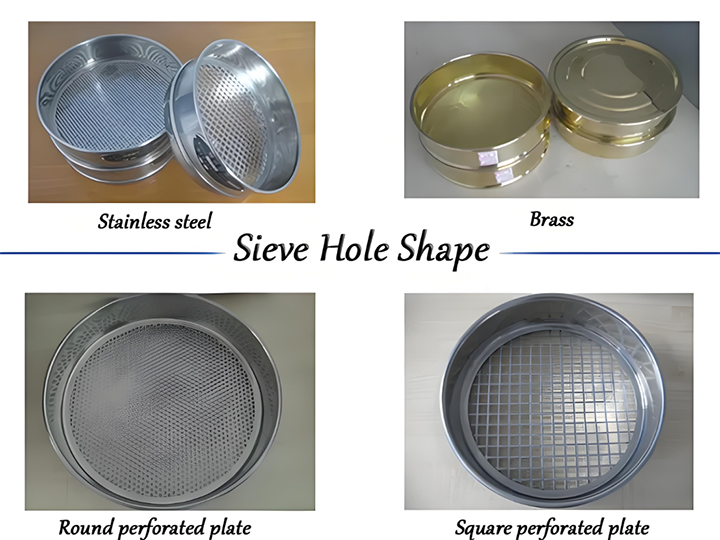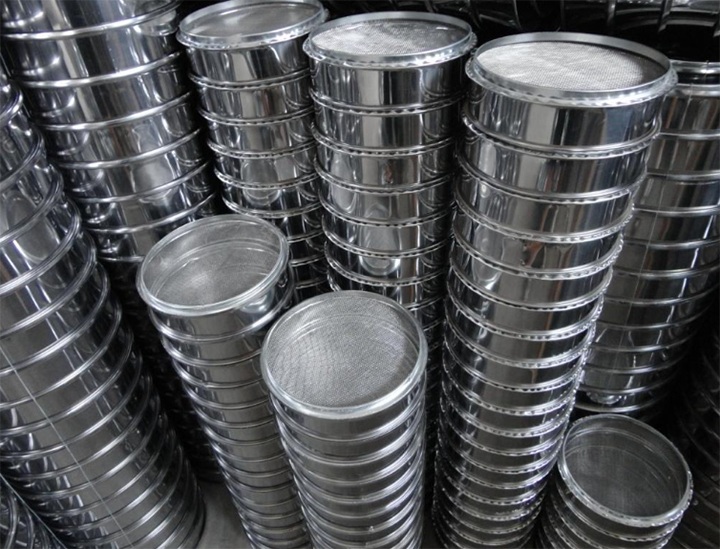Wednesday November-19 2025 15:04:54
lab test sieve with material is used for sieving powders with uniform particle size and relatively regular shape. It can also handle samples with different specific gravities, those prone to clumping, or those containing a small amount of moisture. The sieve frame diameter is typically available in sizes such as 75 mm, 100 mm, 200 mm, and 300 mm. The sieve frame height varies depending on the design; a full-height sieve frame is approximately 50 mm high, while shorter sieve frames used for stacking are typically about 25 mm high to facilitate multi-layer stacking. Materials used include stainless steel, brass, and nylon. It can be used individually or in conjunction with different types of laboratory sieves, such as ultrasonic sieves, electromagnetic sieves, and manual vibrating sieves.

The sieve with material, including the sieve frame, sieve mesh, sieve cover, and bottom collection tray, is secured into a rigid unit by a central screw and nut, preventing material leakage during testing. When placed on a vibrating screen, the motor-driven mechanism generates continuous horizontal and vertical combined vibrations, causing the material to be fully thrown and tumbled on the screen surface, allowing particles smaller than the screen openings to pass through effectively. Before starting the vibrating screen, parameters such as the vibration frequency of 1440 times/minute and the impact height of 0-5mm can be set to achieve better screening results.

In lab test sieves with different materials, the aperture and strength are controlled by plain weave, twill weave, or mat weave to meet different applications from coarse sieves to fine sieves.
Metal wire mesh
Weaving method: Plain weave, where warp and weft threads are interlaced, is the most common and stable method.
Specifications: Standard screen apertures range from 125mm to 20µm.
Characteristics: Stainless steel: Corrosion resistant, wear resistant, high strength, suitable for most general applications such as soil, sand, gravel, and chemicals.
Brass: Lower cost, non-magnetic, but poor wear and corrosion resistance, easily oxidized. Suitable for dry materials that are sensitive to iron contamination and are non-corrosive.

Electroformed Microporous Mesh
Process: Formed on a mold through electroplating, resulting in extremely high precision and smooth pore walls.
Specifications: Primarily used for screening extremely fine particles; pore size typically ranges from 20µm to 5µm.
Characteristics: Extremely high precision; pore shape is typically round or square; pore walls are smooth and burr-free, preventing clogging; the mesh is relatively thin with a large opening area, resulting in high screening efficiency; the material is usually pure nickel, offering good corrosion resistance, but it is expensive and less strong than woven mesh, making it more fragile.
Applications: Particle size analysis of precision powders such as high-grade pigments, ceramic powders, metal powders, and pharmaceutical raw materials.

Polyester (Nylon) Woven Mesh
Weaving Method: Similar to metal wire mesh, using a plain weave.
Specifications: Wide range of pore sizes, from millimeters to approximately 20µm.
Characteristics: No metal contamination, suitable for high-purity industries such as food and pharmaceuticals; possesses a certain degree of elasticity and toughness, reducing screen deformation caused by material impact; good acid resistance, but not resistant to strong alkalis and some organic solvents; wear resistance is generally not as good as stainless steel.
Applications: Screening of food additives, flour, pharmaceuticals, cosmetic raw materials, and materials with special hygiene or corrosion resistance requirements.
The use of a lab test sieve with material follows standardized procedures to ensure the accuracy and repeatability of results. Besides the following three applications, it is also used for impurity detection, soil science research, and quality control of building materials.
Particle size analysis: Place the sample in a multi-layer sieve, stacked sequentially from large to small aperture, with a lid on top and a receiving tray at the bottom. Weigh an appropriate amount of dry sample and place it on the top sieve, install it on a vibrating sieve machine, and start sieving. Finally, calculate the residue and throughput of each layer to plot a particle size distribution curve.
Wet sieving: Used for processing materials that are prone to agglomeration, have high powder content, or are sensitive to moisture. A single sieve is installed on a wet sieving device, and the sample is placed on the sieve surface. The sample is continuously rinsed with a specific solvent using a low-pressure spray head while the vibrating sieve is started. After sieving until the water runs clear, the residue on the sieve is collected, dried, and weighed.
Material Classification: Separating a batch of mixture into different components according to particle size. For example, extracting a finished product with a specific particle size range from grinding materials. After sieving, the products from each sieve grade are collected separately for subsequent processes or experiments.

A lab test sieve with material is used to measure the fineness of cement to control setting time, analyze the gradation of building sand to ensure concrete strength, and determine the impact of fertilizer particle uniformity on fertilization effectiveness. In flour processing, it controls the fineness of flour to ensure texture; in pharmaceutical manufacturing, it detects the particle size of drug powders to ensure dissolution rate and efficacy. Additionally, it is used to detect the particle size distribution of foundry silica sand to affect casting quality, and the fineness of pigment powder to determine coating color and hiding power.

Lab test sieve with materials are fundamental equipment for particle size analysis and material screening, conforming to international and national standards such as ASTM and ISO. Their versatility, from sieve material and aperture specifications to vibration modes, allows them to adapt to different material properties and experimental scenarios. Our factory manufactures complete sieve sets, individual sieves, and matching vibrating sieve machines, and provides comprehensive laboratory sieving solutions.
Soil sieve analysis is a soil particle size determination method based on the principle of mechanical separation...
Juice Powder Ultrasonic Sieve test
The ultrasonic sieve test for juice powder is a fine screening equipment designed for delicate, moisture-absorbing...
Standard Test Method for Particle-Size Analysis of Soils
Standard Test Method for Particle-Size Analysis of Soils (ASTM D422)aims to accurately determine the size distribution of soil particles...
Size sieve for soil primarily involves the sieve frame diameter and sieve aperture size...
Nov 19, 2025
Lab test sieves with materials include brass, stainless steel, or brass frames with stainless steel m...
Nov 18, 2025
Wet sieving concrete is a sample pretreatment procedure that removes coarse aggregate from fresh conc...
Nov 07, 2025
Mechanical Sieve Shaker for Particle Analysis
Mechanical Sieve Shaker for Particle Analysis employs a unique two-dimensional compound motion to aut...
Nov 04, 2025
Test sieve sugar powder size detection
Test sieve sugar powder size detection is a physical detection method that uses multiple layers of st...
![]()
Then we look forward to hearing from you
Contact Us
Industrials
Yanjin county forest park gate to the west 1000 meters north road sitemap
